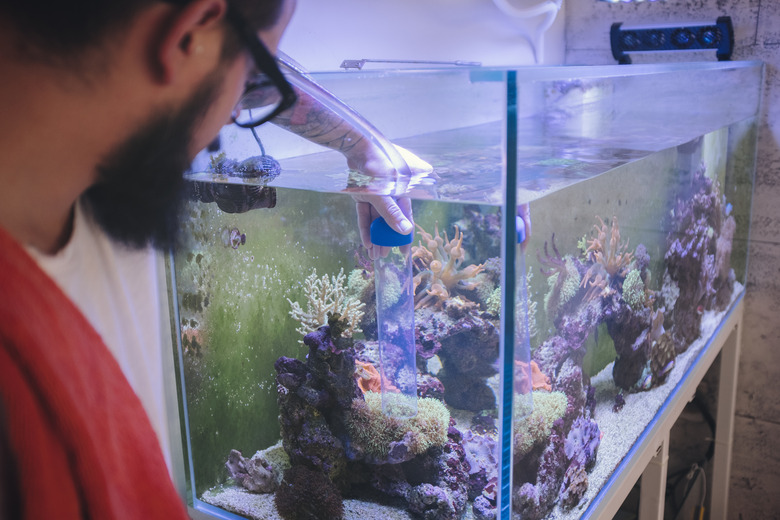How To Create Good Bacteria In Fish Tanks
When you see all the antibacterial products designed to kill germs, you might cringe a little at the thought of adding bacteria to a fish tank. Like any animal, fish can get sick from an imbalance of bacteria in their environment, but the right bacteria can help. In fact, maintaining the right level of good fish tank bacteria is crucial to your fish staying alive.
The importance of good bacteria
The importance of good bacteria
Two types of beneficial aquarium bacteria play an important role in your tank's nitrogen cycle. As fish excrete waste, while other biologic matter such as plant leaves and leftover fish food break down, they produce ammonia. Too much ammonia in the tank will kill your fish very quickly. The water can contain lethal amounts of ammonia while still appearing crystal clear.
The first type of bacteria, known as Nitrosomonas, break down ammonia into nitrites. The goal is to have a colony of this beneficial bacteria that can break down ammonia as fast as it's produced. Nitrites are still very toxic to fish, and this is where the second type of bacteria, Nitrobacter, comes into play.
Nitrobacter feasts on the nitrites and converts them into less harmful nitrates. You must still reduce nitrates manually by partially changing the aquarium water regularly, but without the beneficial aquarium bacteria, fish would never make it until cleaning day. Use an aquarium water test kit to measure the levels of ammonia, nitrites, and nitrates as well as the water's pH.
Adding good aquarium bacteria
Adding good aquarium bacteria
If you've heard stories of people setting up their new aquarium and filling it with fish only to have them all die within the first few days, you know the result of not having enough good bacteria. Fortunately, good bacteria are everywhere, including in the air and your tank's interior surface.
Adding an ammonia source in the tank while constantly running the filter creates the conditions for the bacteria to flourish. The oxygen-loving colonies will set up shop in the aquarium filter where there is oxygenating water movement. As bacteria colonies begin to flourish, you'll see a sudden drop in the ammonia levels and a steep rise in nitrites. The nitrate-producing bacteria will start to take hold and will drop the nitrite and ammonia levels to zero.
Starting the nitrogen cycle
Starting the nitrogen cycle
There are several ways to get the nitrogen cycle started in your tank. The easiest way is by adding water to your tank from a fish tank that is already established. If you have a friend with a healthy aquarium, arrange to bring home up to one-third of their aquarium water on a day they'll be cleaning their tank.
Another method involves introducing one or two hardy starter fish to the tank, such as goldfish for cold water tanks or zebra danios for warm freshwater tanks. Damselfish is effective in a saltwater aquarium. Don't attempt to speed up the process by adding more fish because they'll produce more ammonia than the developing fish tank bacteria can handle, and you'll wind up with dead fish.
Patience is key
Patience is key
It can take several weeks for your tank to cycle, which means that the ammonia and nitrites are at zero. Although using gravel, water, or a filtration sponge from an established tank can help move things along, it's crucial to just wait while nature takes its course.
Avoid adding products that neutralize ammonia during this time as they can cause incorrect readings in your water test kit. The ammonia is still there; its toxicity is merely neutralized. It's important to get a correct reading to know when your tank is fully cycled.
Cloudy water concerns
Cloudy water concerns
Don't worry if the water in your tank is filled with cloudy water during the process. This is simply bacterial bloom that is normal as good aquarium bacteria establish themselves, and it will go away as your tank cycles.
If bacterial blooms appear once you add your fish, take it as a big warning sign that your nitrogen cycle is out of whack. Test your aquarium water and replace a third of the water to prevent your fish from dying. Figure out the cause such as overfeeding your fish, causing them to poop more and leaving uneaten food rotting in the tank. Or you might have accidentally rinsed out the fish tank biological filter sponge with tap water, resulting in the death of your bacteria from the chlorinated water.
